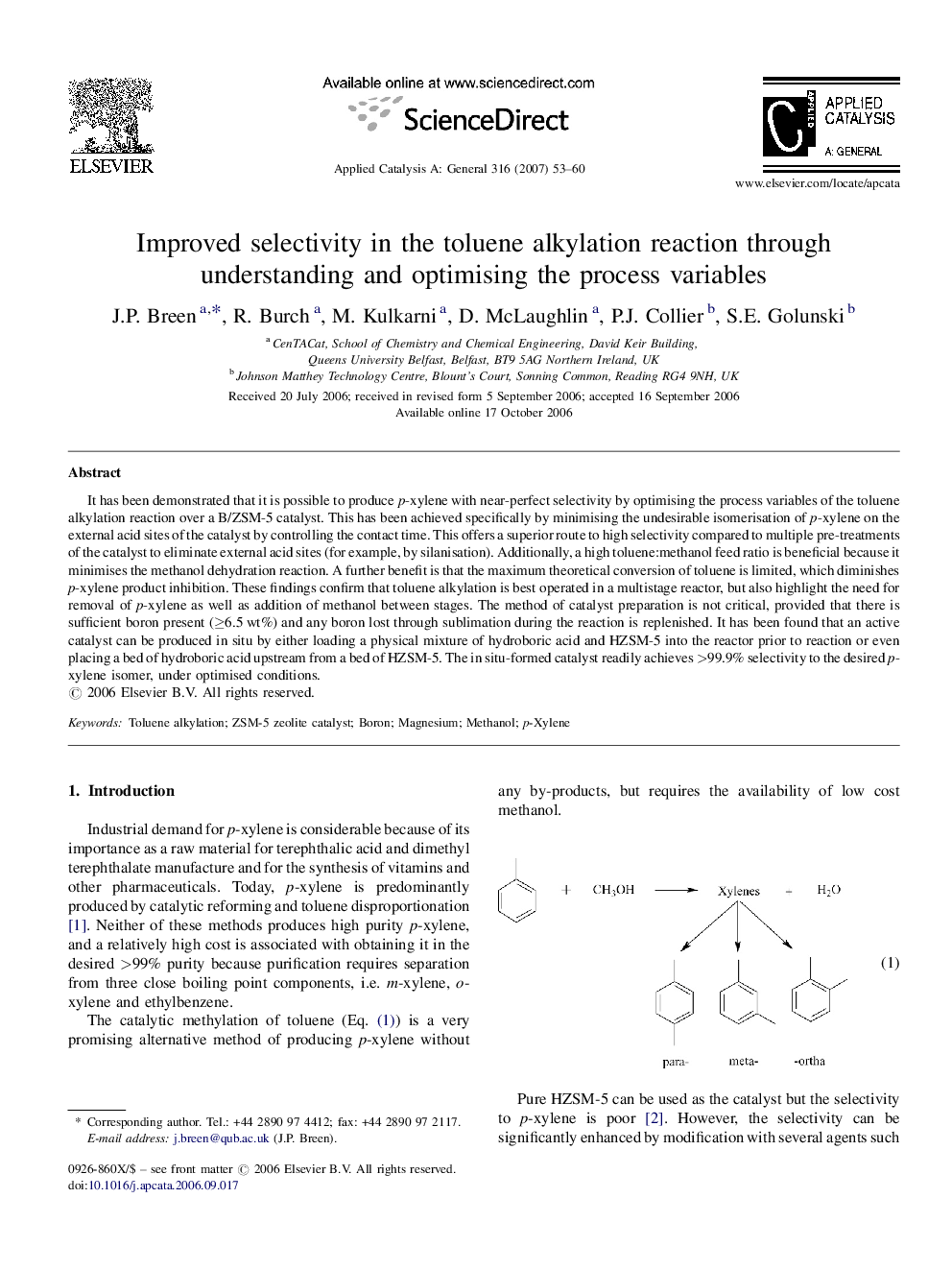| کد مقاله | کد نشریه | سال انتشار | مقاله انگلیسی | نسخه تمام متن |
|---|---|---|---|---|
| 43737 | 45986 | 2007 | 8 صفحه PDF | دانلود رایگان |

It has been demonstrated that it is possible to produce p-xylene with near-perfect selectivity by optimising the process variables of the toluene alkylation reaction over a B/ZSM-5 catalyst. This has been achieved specifically by minimising the undesirable isomerisation of p-xylene on the external acid sites of the catalyst by controlling the contact time. This offers a superior route to high selectivity compared to multiple pre-treatments of the catalyst to eliminate external acid sites (for example, by silanisation). Additionally, a high toluene:methanol feed ratio is beneficial because it minimises the methanol dehydration reaction. A further benefit is that the maximum theoretical conversion of toluene is limited, which diminishes p-xylene product inhibition. These findings confirm that toluene alkylation is best operated in a multistage reactor, but also highlight the need for removal of p-xylene as well as addition of methanol between stages. The method of catalyst preparation is not critical, provided that there is sufficient boron present (≥6.5 wt%) and any boron lost through sublimation during the reaction is replenished. It has been found that an active catalyst can be produced in situ by either loading a physical mixture of hydroboric acid and HZSM-5 into the reactor prior to reaction or even placing a bed of hydroboric acid upstream from a bed of HZSM-5. The in situ-formed catalyst readily achieves >99.9% selectivity to the desired p-xylene isomer, under optimised conditions.
It has been demonstrated that it is possible to produce p-xylene with >99.9% selectivity by optimising the process variables of the toluene alkylation reaction over a B/ZSM-5 catalyst. This has been achieved specifically by minimising the undesirable isomerisation of p-xylene on the external acid sites of the catalyst by controlling the contact time. Figure optionsDownload as PowerPoint slide
Journal: Applied Catalysis A: General - Volume 316, Issue 1, 2 January 2007, Pages 53–60